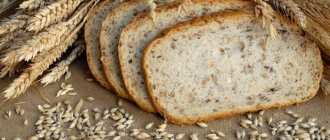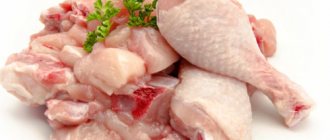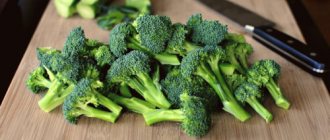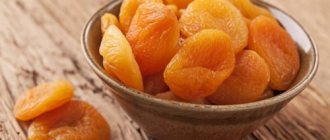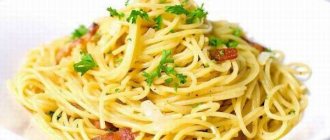Treatment of pancreatitis consists not only of taking enzyme preparations that help improve the digestion process, but also of following a special diet that excludes from the patient’s diet all foods that irritate the pancreas and stimulate the production of pancreatic juice. Do these products include juicy and aromatic melons? And is it possible to eat watermelon with pancreatitis? It is the possibility of consuming these berries for inflammation of the pancreas that will now be discussed.
What are the benefits of melon and watermelon?
Watermelon and melon are delicious berries, which contain a huge amount of useful vitamins and minerals. Moreover, they do not contain fats at all, which can burden the gastrointestinal tract. Most of these fruits consist of water, which ensures the normalization of the urinary system and the elimination of edema.
At the same time, the body is saturated with beneficial vitamins and minerals, which help normalize metabolism in the body. With regular consumption of melon and watermelon, a person becomes less irritable, since these berries, due to their high magnesium content, have a beneficial effect on the functioning of the central nervous system.
In addition, these berries are low in calories and are great for weight loss. They also contain special elements that help strengthen the cardiovascular system and immunity. But if these berries have so many beneficial properties, is it possible to eat them for pancreatitis?
Composition of melon
There is a belief that melon consists only of water and sugar , which means it can be eaten in unlimited quantities. But that's not true. It contains a wide range of substances that affect the functions of the body.
For 100 g of melon pulp there is:
- calories: 34;
- fat: 0.2 g;
- saturated fat: 0.1 g;
- polyunsaturated fatty acids: 0.1 g;
- monounsaturated fatty acids: 0 g;
- sodium: 16 mg;
- potassium: 267 mg;
- carbohydrates: 8 g;
- fiber: 0.9 g;
- sugar: 8 g;
- proteins: 0.8 g;
- vitamin A: 3% of the permissible daily dose;
- vitamin C: 30% of the permissible daily dose;
- vitamin B6: 4.5% of the permissible daily dose;
- folic acid: 4.5% of the permissible daily dose;
- vitamin K: 3% of the permissible daily dose;
- potassium: 7% of the permissible daily dose;
- magnesium: 2% of the permissible daily dose.
Beneficial features
Melon contains compounds that function as antioxidants : beta-carotene, starch, folic acid, potassium, iron, inositol, silicon, phosphorus, magnesium, carotene, organic acids, calcium, vitamins C, PP, B1, B2.
These substances play extremely important roles in body functions:
- act as a mild laxative;
- fight inflammatory processes;
- have a diuretic effect, due to which they help remove small stones and sand from the urinary organs;
- participate in the regulation of water-salt balance in the body;
- have an anthelmintic effect.
Let's look at the properties of individual elements in more detail :
- high vitamin C content improves immunity;
- silicon has a beneficial effect on the condition of blood vessels;
- inosine and vitamin A improve hair condition;
- folic acid stimulates hematopoiesis;
- lycopene and a number of other antioxidants slow down aging and reduce the risk of cancer;
- pectins have an antitoxic effect;
- due to the enzymes contained in the pulp, the breakdown of food substrates is improved;
- nicotinic acid has a beneficial effect on heart function;
- Folic acid is involved in the production of the “joy hormone” serotonin and helps improve mood.
Melon for pancreatitis
Considering that pancreatitis is a disease in which the production of digestive enzymes is disrupted, it is natural that diet plays a huge role in its treatment.
Melon is a very sweet and juicy berry that is low in calories and contains no fat. It would seem that there are no contraindications to its use for pancreatitis of the pancreas. But those patients who are concerned about their health still wonder whether it is possible to eat melon with pancreatitis or not.
You should not eat melon without first consulting a specialist.
In fact, melon is not contraindicated for pancreatitis, but only during periods of stable remission, when symptoms of the disease do not appear for at least several months. At the same time, melon with pancreatitis can be eaten only if the patient has established carbohydrate metabolism in the body, since this berry contains a lot of carbohydrates. If metabolism is disturbed, its use can cause a sharp deterioration in well-being.
If the patient has no contraindications to eating melon, it can be eaten with pancreatitis. But only by observing the following rules:
- when the berry is first introduced into the diet after an exacerbation of the disease, it should be consumed in the form of melon jelly or mousse;
- Fresh berry pulp can be included in the diet only if the body tolerates jellies and mousses made from it well.
If the patient’s body tolerates melon dishes well and the pulp of this berry has already been included in the diet, it is necessary to adhere to certain standards. The daily dose of melon allowed for consumption during the stable remission phase is 400-500 g.
And speaking about whether it is possible to eat melon for pancreatitis, it should be noted that at the time of exacerbation of the disease, this berry should be abandoned. There are reasons for this:
- This berry contains a lot of carbohydrates, which, when entering the body, stimulate the production of insulin. This, in turn, puts a strong burden on the endocrine cells of the pancreas, as a result of which its functionality worsens even more and, accordingly, the patient’s condition as well.
- Melon contains substances that, when entering the digestive tract, provoke the release of hydrochloric acid. It also stimulates the pancreas, causing it to actively produce pancreatic juice. And since during an exacerbation of pancreatitis, spasms occur in the excretory ducts of the gland, blocking the release of pancreatic juice, it begins to accumulate inside the organ, activating the processes of self-digestion. This also leads to damage to pancreatic cells.
- Melon contains a lot of sugar and fiber, which cause fermentation processes in the intestines. As a result, the patient develops severe pain, colic and cramps in the abdomen, stool is disrupted (it acquires a foamy structure) and increased gas formation is observed.
If you experience a pain attack after eating melon, you should immediately call an ambulance.
Considering all these processes that are activated when consuming melon, it is not worth eating it for pancreatitis, gastritis and cholecystitis during periods of exacerbation. This can lead to a sharp deterioration in the patient’s well-being and a significant decrease in the effectiveness of the treatment.
And at the time of stable remission, there is no need to abuse this berry. Do not forget that each body is individual and can react differently to certain foods. Therefore, with the question of whether or not you can eat melon in your case, you should go to the doctor.
Standards of use
During the period of exacerbation of pancreatitis of the pancreas, the use of melon in any form is strictly prohibited.
When remission occurs, you can eat no more than 100 g of pulp at one time. The daily dose is 400 g. If well tolerated, an increase in the dose is permissible, but the maximum possible amount is 1.5 kg per day. Excessive consumption of this fruit will lead to overload of the digestive system and will negate all the benefits.
Watermelon for pancreatitis
Watermelon, like melon, is considered a harmless product. However, not everyone can eat it in the presence of a disease such as chronic pancreatitis. The pulp of this berry also contains no fats, which are contraindicated for this disease, but it contains a huge amount of both complex and simple carbohydrates, which you should be very careful with in case of pancreatitis.
As mentioned above, carbohydrates help stimulate pancreatic juice and activate self-digestion processes. Therefore, eating watermelon for pancreatitis and other diseases of the pancreas is not recommended.
Moreover, this sweet berry contains substances that enhance the release of bile. And this is also very dangerous, since excessive production of bile can lead to an exacerbation of the disease and the occurrence of pain.
Also, do not forget that pancreatitis is often accompanied by various complications, and excessive production of insulin and bile in the body can lead to serious consequences.
Watermelon is contraindicated in patients with pancreatitis who have impaired glucose metabolism in the body.
However, as in the previous case, watermelon is allowed to be consumed during persistent phases of remission of the disease. But even here, you should not immediately start eating the pulp of the berry. First you need to try watermelon juice. If no deterioration in well-being is observed after it, the pulp can be included in the diet, but in small quantities, no more than 300-400 g per day.
Eating watermelon is contraindicated for those people who have acute pancreatitis. Moreover, the degree of severity does not play any role in this matter. In some patients, even one small piece of watermelon can trigger a painful attack, requiring urgent hospitalization of the patient and analgesic, antispasmodic and anti-inflammatory therapy.
If the patient tolerates watermelons well, then he should know that only late berries are allowed for food. You should not eat the first watermelons, regardless of whether pancreatitis is in remission or exacerbation, since they contain many chemicals that can also cause a sharp deterioration in well-being.
Late watermelons are considered very useful, even with a disease such as pancreatitis. After all, they:
- have low calorie content (they can be used on fasting days);
- contain many antioxidants that slow down the aging process in the body, prevent the formation of tumors and relieve inflammatory processes;
- are natural diuretics, which reduces the load on the cardiovascular system;
- contain folic acid, which is required for the normal digestion of proteins and the process of cell division;
- contains substances that help prevent the formation of stones in the urinary ducts and kidneys.
Effects of yellow pumpkin on the pancreas
The components of melon pulp affect the functioning of the organ. Moreover, in addition to the possible negative effects, the fruit, when consumed correctly, can bring many benefits. Melon for pancreatitis has the following beneficial properties:
- cleanses accumulated toxins;
- improves digestion;
- replenishes the lack of vitamins and beneficial microelements;
- strengthens the immune system;
- has a beneficial effect on the nervous system and hormonal levels;
- stimulates blood circulation;
- has a mild diuretic effect;
- lowers blood pressure.
However, one cannot discount a number of undesirable effects that will result from the indefatigable consumption of yellow pumpkin. Among them:
- Activation of the endocrine glands. The production of gastric juice, hydrochloric acid and other digestive enzymes increases. Their excess causes increased inflammatory processes in the pancreas. Fruits that are not fully ripened are especially dangerous in this regard.
- Melon is rich in coarse fiber and simple sugars. This combination causes fermentation in the stomach and intestines, which significantly worsens the patient’s well-being.
- The juicy pulp is rich in carbohydrates. When they are broken down, there is a sharp jump in blood sugar and insulin production. The inflamed gland is forced to start working more intensely, which is unacceptable in the presence of pathological processes in it.
If for healthy people the listed properties are not so critical, for a patient with pancreatitis they can turn into a real disaster.
Let's sum it up
Summarizing all of the above, it should be noted that melon and watermelon are undoubtedly very useful berries that can normalize many processes in the body. But with a disease such as pancreatitis, their use can only do harm. They stimulate the production of pancreatic juice and insulin, which puts extra stress on the pancreas. And this must be taken into account. And taking into account the individual characteristics of each organism, only a specialist should decide whether watermelon and melon can be included in the diet. And this applies not only to these berries. The inclusion of any food in the diet in the presence of pancreatitis should be discussed with your doctor.
What you need to know about melon
The beneficial properties of any product will be reduced to zero by improper storage or preparation. It is easy to accidentally harm the body. For diseases of the digestive system, the issue of correct consumption of fruits and vegetables, and melon, is extremely important.
How to choose a melon
To avoid harm, you need to choose the right fruit:
- When purchasing, make sure the peel is intact. The vegetable should not have stains, cracks, or dents. Through damage, pathogenic bacteria enter the fetus.
- The melon should be ripe, but not overripe. A ripe melon usually has a thin yellow rind of different shades (varieties with green or brown skin have been bred) without greenish spots, with a dried tail and a strong aroma.
- It is dangerous to eat cut melons that have been left in a room or in the sun for a long time; such products quickly deteriorate.
Recommendations when choosing a melon must be followed; for pancreatitis, the rules are especially important. If an unripe fruit causes short-term digestive upset in a healthy person, the increased load on the pancreas of a patient with pancreatitis will provoke an exacerbation of the disease.
How to eat melon correctly
The main rule for eating vegetables is that melon cannot be combined with other products. This is an independent dish, allowed for consumption two hours after eating. Melon is not a dessert, even if the vegetable is considered a dessert. Melon is digested in the intestines, practically not remaining in the stomach. It is better for the organ to remain empty. Otherwise, digestive problems are guaranteed: bloating, nausea, diarrhea, constipation. In the stomach, the sweet fruit is not digested and begins to ferment. It is not recommended to consume the aromatic vegetable on an empty stomach, especially with pancreatitis (occasionally permitted by a doctor for medicinal purposes).
Before nutritionists figured out the incompatibility of melon with other foods, there were deaths from misuse. Milk, fermented milk products, and alcohol should not be taken at the same time as melon. You will need to wait one and a half to two hours before your next meal.
Before cutting, the sweet vegetable is thoroughly washed. Despite the tender flesh, it is dangerous to swallow in a hurry - you need to chew each piece well.
It is not necessary to eat the melon until it crusts; the flesh close to the skin may not be ripe enough.
Melon and pancreatitis
The possibility of introducing melon into the diet of a patient with pancreatitis depends on the current phase of the disease. In case of persistent remission, melon should be included in the menu, taking into account the beneficial properties listed above. It should be administered with caution, taking into account the principles of nutrition during illness, after consultation with the doctor. It's better to start with mousses and jellies. If there are no negative consequences of consumption, it is permissible to try fresh melon. Melon juice diluted with warm water is allowed for pancreatitis. The drink retains the beneficial properties of the sweet vegetable, does not contain fiber, and eliminates the risk of harming the pancreas and stomach.
During periods of exacerbation of the disease, you will have to forget about melon and some other products for a while. Normally, melon pulp, containing dietary fiber and carbohydrates, stimulates the digestive system. If pancreatitis has worsened, additional stimulation of digestive processes will aggravate the situation. Eating melon during the acute phase of the disease is prohibited.
Briefly about the most important things
It is allowed and necessary to use melon for pancreatitis. Thanks to its vitamin and mineral composition and tender pulp, the vegetable has a beneficial effect on the body's digestive system. In case of chronic pancreatitis, melons and melons are not prohibited during calm periods. Melon is eaten in the form of mousses, jellies and fresh in small portions between meals. Mixing melon with other foods is dangerous. Melon juice, which is included in the list of permitted juices for pancreatitis, is useful.
In the acute phase of the disease, melon should be abandoned, despite its apparent safety.
